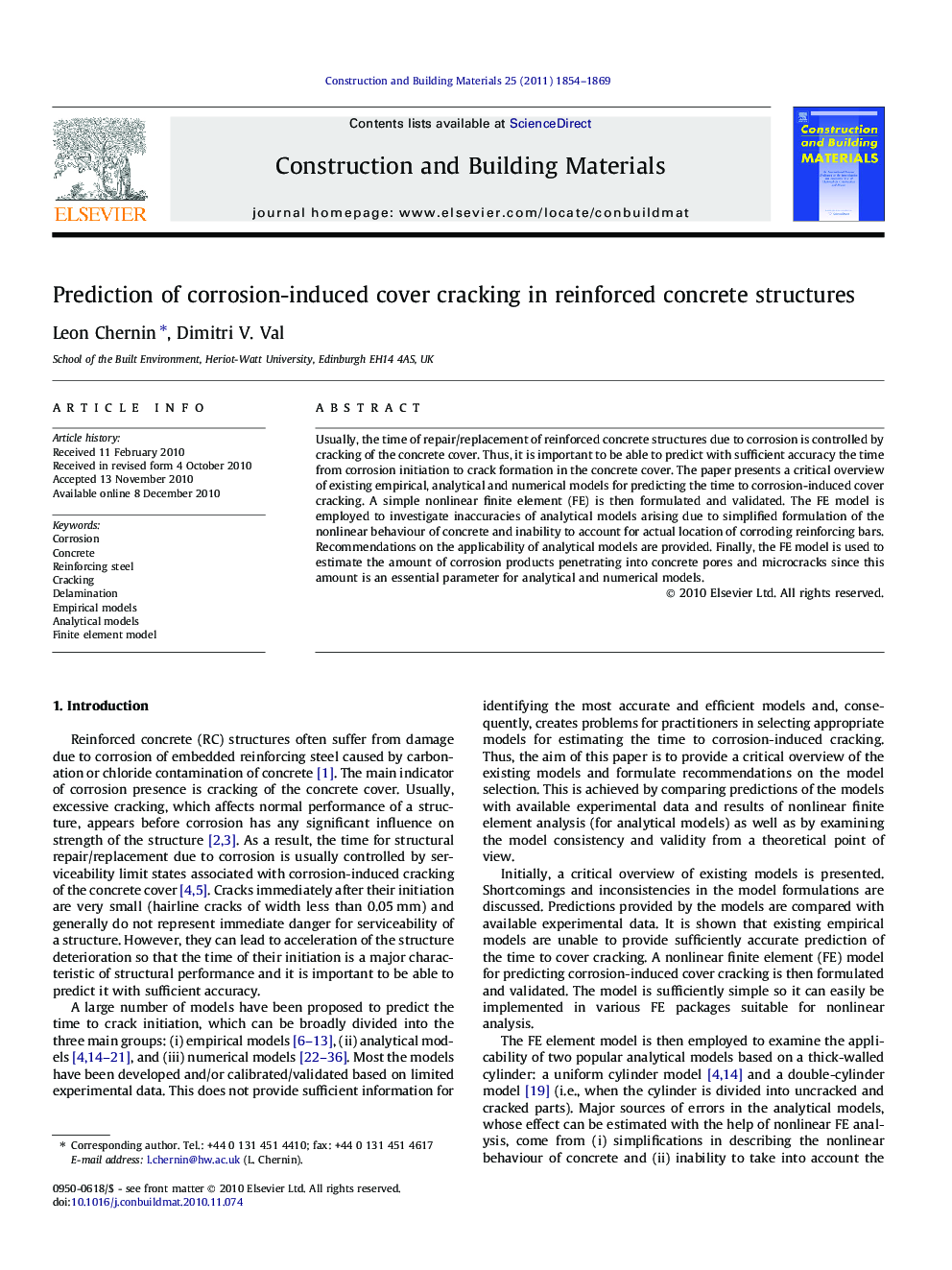| Article ID | Journal | Published Year | Pages | File Type |
|---|---|---|---|---|
| 259727 | Construction and Building Materials | 2011 | 16 Pages |
Usually, the time of repair/replacement of reinforced concrete structures due to corrosion is controlled by cracking of the concrete cover. Thus, it is important to be able to predict with sufficient accuracy the time from corrosion initiation to crack formation in the concrete cover. The paper presents a critical overview of existing empirical, analytical and numerical models for predicting the time to corrosion-induced cover cracking. A simple nonlinear finite element (FE) is then formulated and validated. The FE model is employed to investigate inaccuracies of analytical models arising due to simplified formulation of the nonlinear behaviour of concrete and inability to account for actual location of corroding reinforcing bars. Recommendations on the applicability of analytical models are provided. Finally, the FE model is used to estimate the amount of corrosion products penetrating into concrete pores and microcracks since this amount is an essential parameter for analytical and numerical models.
Research highlights► Different methods of numerical modelling the rebar steel corrosion are examined. ► Numerical modelling is employed to investigate inaccuracy of analytical models. ► Effect of the location of a corroding rebar on concrete cover cracking is studied. ► Recommendations on the applicability of analytical models are provided. ► Thickness of porous zone around a rebar is larger than previously estimated.
